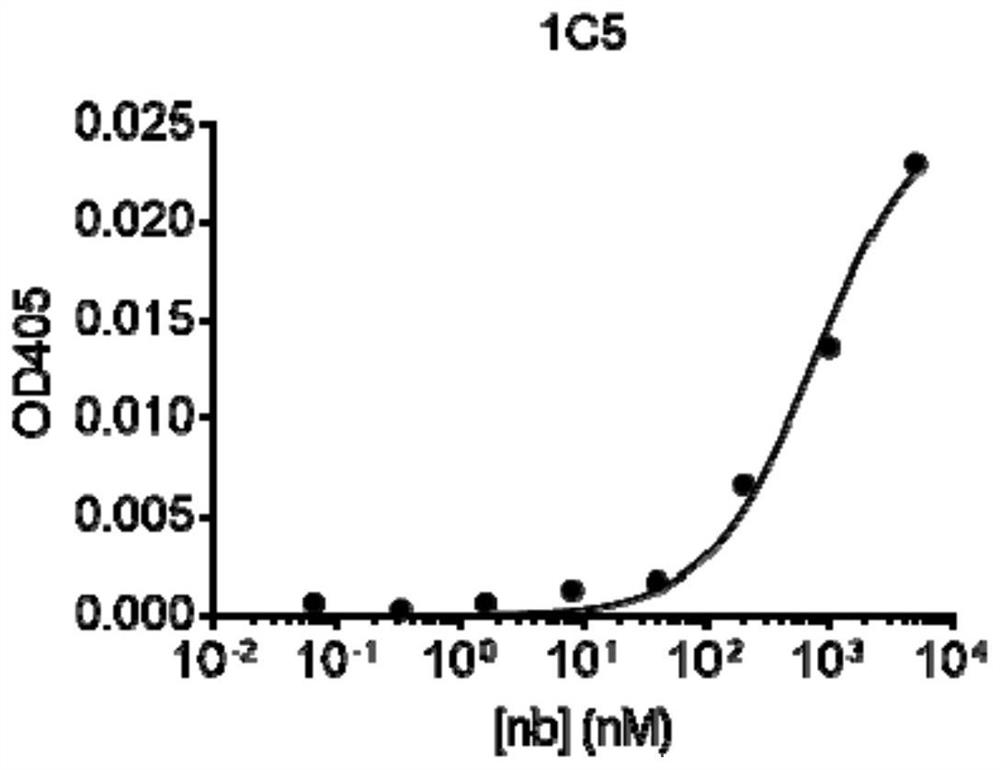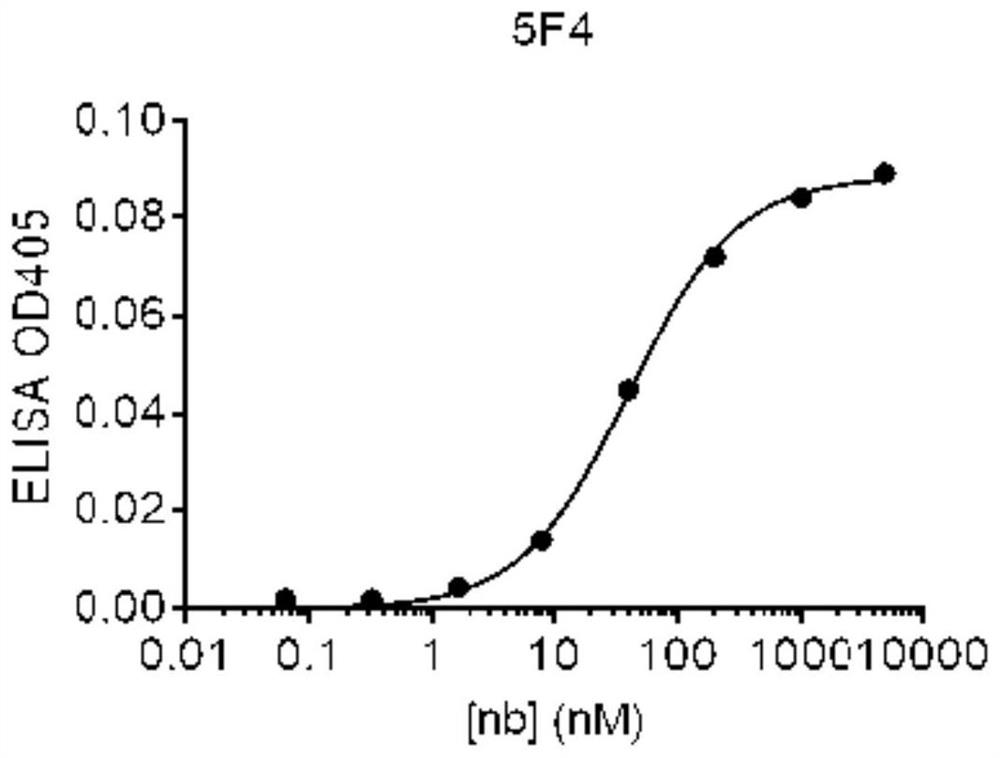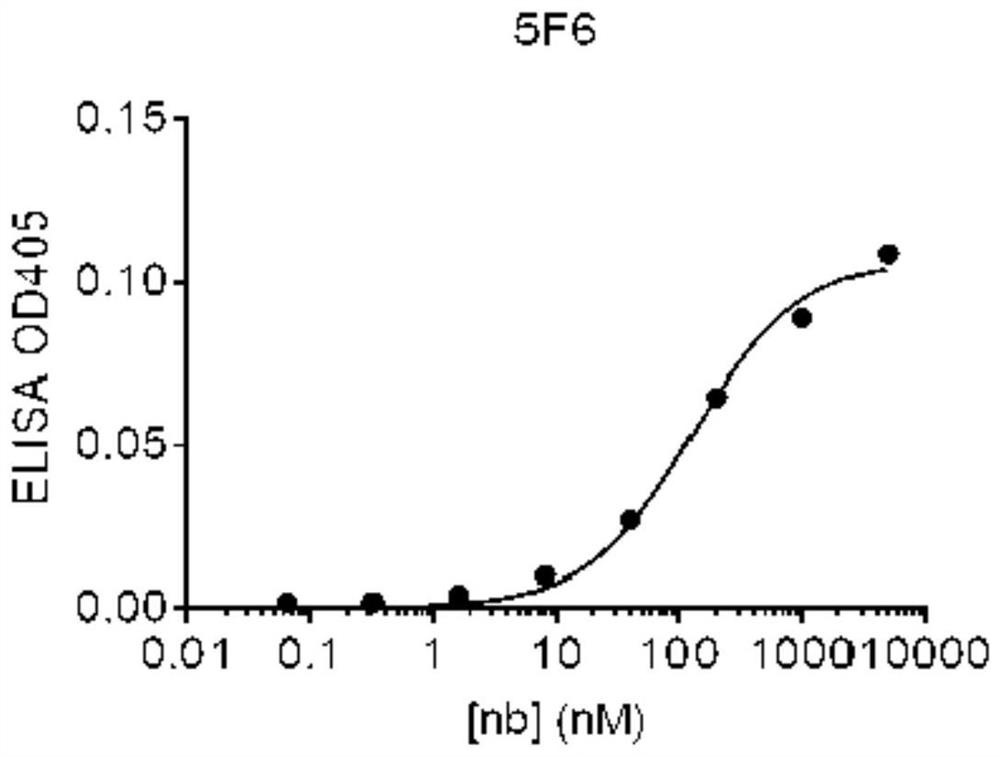Specific antibody of pepsinogen II as well as preparation method and application thereof
A pepsinogen and specific technology, applied in the biological field, can solve the problems of unfavorable long-distance transportation and popularized detection, large-scale mass production of finished products, unfavorable large-scale mass production, etc. The effect of chemical production and simple structure
- Summary
- Abstract
- Description
- Claims
- Application Information
AI Technical Summary
Problems solved by technology
Method used
Image
Examples
Embodiment 1
[0094] Example 1: Preparation of antigens
[0095] The DNA sequence encoding pepsinogen II was constructed into a pFASTBac-HTA expression vector, and PGII with a histidine tag (6*His-tag) was recombinantly expressed in SF9 insect cells, and then extracted and purified as an antigen.
[0096] The antigen has amino acid sequences as shown in SEQ ID NO: 1, specifically:
[0097] MKWMVVVLVCLQLLEAAVVKVPLKKFKSIRETMKEKGLLGEFLRTHKYDPAWKYRFGDLSVTYEPMAYMDAAYFGEISIGTPPQNFLVLFDTGSSNLWVPSVYCQSQACTSHSRFNPSESSTYSTNGQTFSLQYGSGSLTGFFGYDTLTVQSIQVPNQEFGLSENEPGTNFVYAQFDGIMGLAYPALSVDEATTAMQGMVQEGALTSP VFSVYLSNQQGSSGGAVVFGGVDSSLYTGQIYWAPVTQELYWQIGIEEFLIGGQASGWCSEGCQAIVDTGTSLLTVPQQYMSALLQATGAQEDEYGQFLVNCNSIQNLPSLTFIINGVEFPLPPSSYILSNNGYCTVGVEPTYLSSQNGQPLWILGDVFLRSYYSVYDLGNNRVGFATAA
Embodiment 2
[0098] Example 2: Alpaca immunization
[0099] The present embodiment will be Example 1 prepared antigen immune alpaca. The specific steps are as follows:
[0100] (1) The average dividing of the prepared antigens in Example 1 into 4 parts, each serving is about 0.25mg;
[0101](2) Cumulative immunization of alpacas is carried out 4 times, and the antigen is injected subcutaneously into the animal, and the first immunization is recorded as the first day, and the subsequent immunization is on the 10th, 19th and 28th days, respectively; Among them, on the 28th day, about 200 mL of venous peripheral blood of alpacas was collected before the fourth immunization, and on the 42nd day, that is, 14 days after the fourth immunization, about 300 mL of alpaca venous peripheral blood was collected.
[0102] Compared with the immunization technology scheme of traditional animal antibodies such as rats and rabbits, the method provided in the present embodiment is to collect a large amount of al...
Embodiment 3
[0103] Example 3: Construction of antibody libraries
[0104] Taking two batches of alpaca venous peripheral blood collected in Example 2 as raw materials, a highly diverse nano-antibody library was constructed. Both batches of intravenous peripheral blood are treated in the same way, specifically:
[0105] (1) Lymphocytes were isolated from the peripheral blood of the alpaca vein using density gradient centrifugation;
[0106] (2) The total mRNA of lymphocytes is extracted and reverse transcription to cDNA;
[0107] (3) Using appropriate DNA primers, using the above cDNA as a template, the VHH fragments of alpaca immunoglobulins IgG2 and IgG3 were amplified by polymerase chain reaction (PCR), that is, DNA fragments of nano-antibodies;
[0108] (4) Connecting VHH's DNA to the surface of the phage to display the screening vector constitutes the VHH-pIII fusion protein expression vector plasmid library; Among them, pIII is a protein present on the flagella on the surface of the phag...
PUM
 Login to view more
Login to view more Abstract
Description
Claims
Application Information
 Login to view more
Login to view more - R&D Engineer
- R&D Manager
- IP Professional
- Industry Leading Data Capabilities
- Powerful AI technology
- Patent DNA Extraction
Browse by: Latest US Patents, China's latest patents, Technical Efficacy Thesaurus, Application Domain, Technology Topic.
© 2024 PatSnap. All rights reserved.Legal|Privacy policy|Modern Slavery Act Transparency Statement|Sitemap



